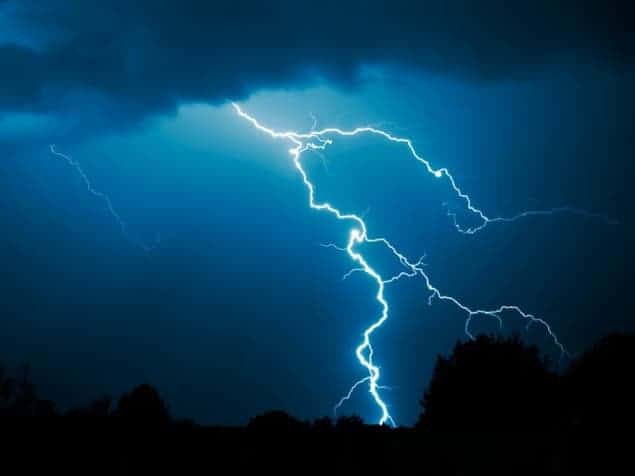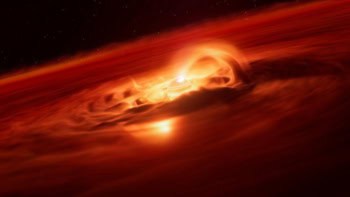
The first evidence that thunderstorms can function as huge natural particle accelerators has been collected by an international team of researchers.
In a presentation at a meeting of the Royal Astronomical Society in Glasgow last week, Martin Füllekrug of Bath University described how the team detected radio waves coinciding with the appearance of “sprites” – glowing orbs that occasionally flicker into existence above thunderstorms. The radio waves suggest the sprites can accelerate nearby electrons, creating a beam with the same power as a small nuclear power plant.
“The discovery of the particle accelerator allows [one] to apply the knowledge gained in particle physics to the real world, and put the expected consequences to experimental testing,” Füllekrug told physicsworld.com.
An old idea
The idea of natural particle accelerators existing just kilometres above our heads first came in 1925, when the UK physicist and Nobel laureate Charles Wilson investigated the effects of a thundercloud’s electric field. Wilson claimed that the electric field would cause an electrical breakdown of the Earth’s atmosphere above the cloud, leading to transient phenomena such as sprites.
These sprites, physicists suggested, would do more than just light up the sky. As highly energetic particles or “cosmic rays” from space bombard our atmosphere, they strip air molecules of their outer electrons. In the presence of a sprite’s electric field, these electrons could be forced upward in a narrow beam from the troposphere to near-Earth space. Moreover, the changing electron current would, via Maxwell’s equations, produce electromagnetic waves in the radio-frequency range.
In 1998 Füllekrug’s colleague Robert Roussel-Dupré of Los Alamos National Laboratory in New Mexico, US, used a supercomputer to simulate these radio waves. The simulations predicted they would come in pulses with a fairly flat spectrum – contrary to the electromagnetic spectrum of the lightning itself, which increases at lower frequencies.
Predictions confirmed
In 2008, while a group of European scientists timed the arrival of sprites from a mountain top in the French Pyrenées, Füllekrug was on the ground with a purpose-built radio-wave detector. The signals he detected coincided with the sprites and matched the characteristics of Roussel-Dupré’s predictions.
“It’s intriguing to see that nature creates particle accelerators just a few miles above our heads,” says Füllekrug, adding: “They provide a fascinating example of the interaction between the Earth and the wider universe.”
Füllekrug notes that he has no particular applications in mind for a sky-based particle accelerator, although he believes there may be wider implications for science. Researchers have many questions about the middle atmosphere because it is so difficult to set up observational platforms there. But by employing what physicists have learned about how such electron beams interact with matter, researchers could use this phenomenon to study this part of the atmosphere.
Indeed, we might be hearing a lot more about natural particle accelerators in the near future. The IBUKI satellite from Japan could soon be looking at the movement of charged particles in the atmosphere. In the next few years several missions – including CHIBIS from Russia and TARANIS from France – should provide more data about these accelerators.
The research is published in the Journal of Geophysical Research.



